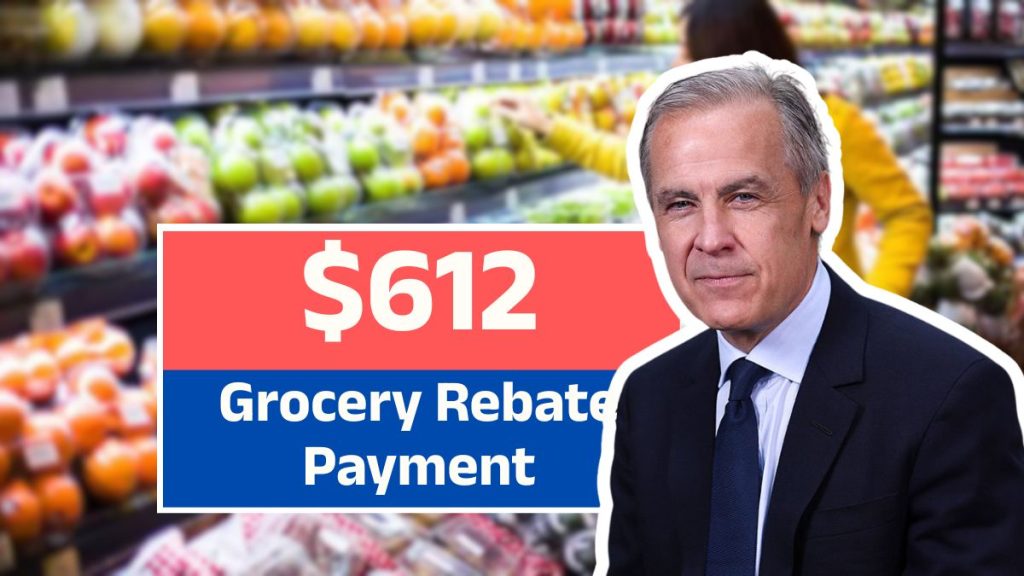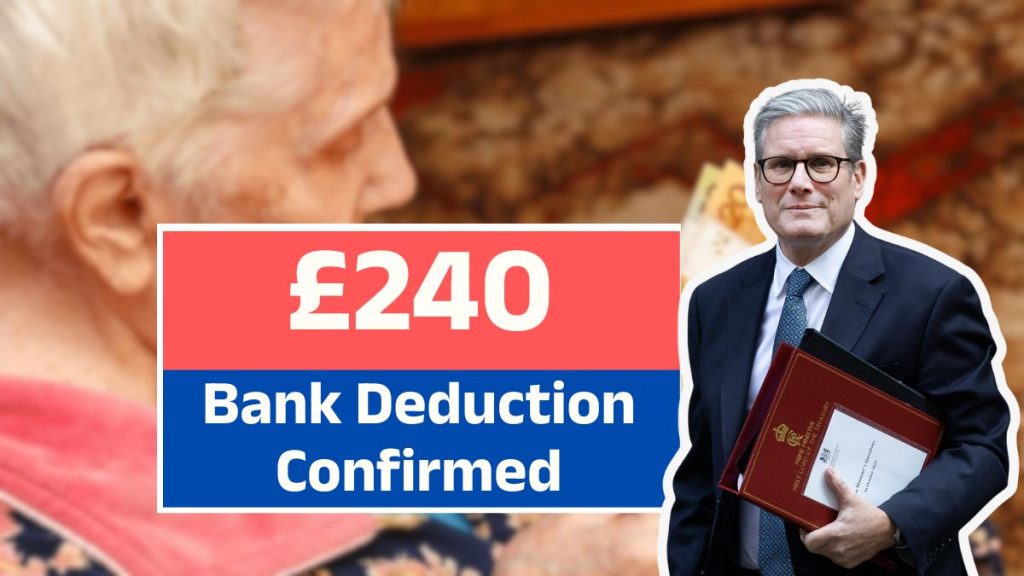The Canadian government has announced the $7,500 Home Renovation Tax Credit 2025, a program designed to help families create safe and accessible living spaces for seniors and individuals with disabilities.
This federal initiative allows eligible households to claim up to $7,500 for qualifying renovation expenses — even if they don’t owe taxes. The program, administered through the Canada Revenue Agency (CRA), aims to ease financial pressure on families while improving home comfort, accessibility, and safety for aging and disabled residents.
Why the Home Renovation Tax Credit Matters

With rising living costs and an aging population, many Canadian families are exploring ways to care for elderly relatives at home. The Home Renovation Tax Credit supports this by reducing renovation expenses needed to make homes senior- or disability-friendly.
The credit helps families add private, accessible living areas for loved ones — such as separate bedrooms, kitchens, or bathrooms — allowing seniors to live independently while staying close to family. Beyond its emotional value, it also contributes to housing affordability and multi-generational living solutions across Canada.
Program Overview (CRA Home Renovation Tax Credit 2025)
| Department Name | Canada Revenue Agency (CRA) |
|---|---|
| Program Name | Home Renovation Tax Credit 2025 |
| Country | Canada |
| Maximum Amount | Up to CAD $7,500 |
| Tax Year | 2025 |
| Payment Type | Refundable tax credit |
| Payout Mode | Cash refund or tax reduction |
| Category | Canada Finance |
| Official Website | www.canada.ca |
This benefit forms part of Canada’s larger affordability strategy, supporting aging-in-place policies that help citizens stay in their own homes longer.
Who Can Apply for the $7,500 Home Renovation Tax Credit
To qualify, applicants must meet conditions related to the person, the property, and the renovation itself.
1. Eligible Person:
- Must be 65 years or older by the end of the 2025 tax year, OR
- Must qualify for the Disability Tax Credit (DTC).
2. Eligible Property:
- The home must be located in Canada and owned by the applicant or a qualified family member (such as a child, parent, or sibling).
- The property must be regularly occupied or intended to be occupied within 12 months after completing the renovation.
3. Eligible Renovation:
- The renovation must create a self-contained secondary unit with its own bedroom, kitchen, and bathroom.
- The purpose should be to provide greater privacy and accessibility for seniors or people with disabilities.
What Expenses Are Covered (Eligible Costs)
The CRA only allows expenses that are directly related to creating or adapting a living space for eligible individuals.
Eligible expenses include:
- Construction materials and supplies
- Contractor and architect fees
- Building permits and professional inspection costs
- Rental of necessary construction equipment
Ineligible expenses include:
- Routine maintenance (e.g., painting or cleaning)
- Furniture, appliances, or decor items
- Landscaping or exterior upgrades unrelated to accessibility
- Minor repairs not part of structural renovation
These strict guidelines ensure the program focuses on genuine accessibility improvements rather than aesthetic upgrades.
How the $7,500 Credit Works (Tax Refund or Reduction)
The Home Renovation Tax Credit is a refundable credit, which means it benefits Canadians even if they don’t owe any income tax.
For example, if your qualifying renovation costs total $15,000, you could claim 15% of that amount (up to $7,500) as a tax refund or reduction.
This refund can significantly ease the cost of essential modifications like installing wheelchair ramps, safety railings, or converting basements into independent living suites.
How to Apply for the Home Renovation Tax Credit 2025
Applying for the Home Renovation Tax Credit requires careful documentation and compliance with CRA standards. Here’s the step-by-step process:
- Plan and Document Your Renovation:
Prepare renovation blueprints and ensure your plans meet local building codes. - Hire Certified Contractors:
Use licensed professionals for construction to ensure quality and eligibility. - Keep Detailed Records:
Save all receipts, invoices, and payment proofs during the renovation process. - Complete Renovation by Year-End:
Ensure the work is completed within the 2025 tax year. - File With CRA:
- Fill out Schedule 12 (Home Accessibility Expenses form).
- Report the eligible amount on line 45355 of your income tax return.
- Submit supporting documentation when requested by CRA.
Applicants can also track claim progress using the CRA’s My Account portal, ensuring transparency and timely updates.
Benefits of the $7,500 Home Renovation Tax Credit
The program offers financial, social, and emotional benefits for Canadian families:
- Reduces renovation costs for essential accessibility improvements.
- Promotes independent living for seniors and disabled persons.
- Supports family-based care, reducing dependence on institutional housing.
- Increases property value through high-quality modifications.
- Encourages safer living conditions with improved mobility and comfort.
Ultimately, the tax credit helps Canadians modernize their homes while keeping families close — a growing need in today’s economy.
How This Credit Fits Into Canada’s Housing Strategy
The Home Renovation Tax Credit is part of the federal government’s broader plan to address housing affordability and accessibility challenges.
It aligns with other initiatives like:
- The Multi-Generational Home Renovation Tax Credit (MGHRTC)
- The First Home Savings Account (FHSA)
- Increased GST rebates for new housing construction
Together, these measures help Canadians build, adapt, and sustain homes that meet changing family needs
Tips for Maximising Your Claim
To make the most of the $7,500 credit:
- Start early — renovations can take longer than expected.
- Work only with licensed contractors and retain all receipts.
- Verify your eligibility before construction starts.
- Consult a tax professional to ensure your claim is accurate.
- Check CRA’s official website for the latest forms and updates.
Good planning not only ensures smoother approval but also prevents costly mistakes during tax filing.
Impact on Accessibility and Multi-Generational Living
The program encourages multi-generational housing, allowing families to live together without losing privacy.
For example, converting a basement or garage into a separate suite lets elderly parents live near their children while maintaining independence. This approach improves emotional wellbeing, reduces long-term care costs, and strengthens family bonds — making it both an economic and social success.
Common Mistakes to Avoid During Application
- Submitting incomplete receipts or handwritten invoices.
- Claiming non-eligible expenses like furniture or decorative work.
- Forgetting to file the Schedule 12 form.
- Missing the tax year deadline for completion.
Double-checking all details before filing your taxes ensures your claim is not delayed or denied by the CRA
Why Canadians Are Embracing Home-Based Care
Canada’s senior population is expected to exceed 10 million by 2035, creating an urgent demand for accessible housing.
With the cost of nursing homes rising, more families are choosing to renovate their homes instead of relocating. The Home Renovation Tax Credit directly supports this shift by making accessibility renovations affordable and achievable.
Experts say that such initiatives will play a major role in helping Canada adapt to its aging demographic while maintaining high living standards.
Key Takeaways
The $7,500 Home Renovation Tax Credit 2025 is a valuable opportunity for Canadians to improve accessibility and comfort at home while receiving government financial support.
Whether it’s installing a stair lift, building an accessible washroom, or creating a private suite for elderly parents, this tax credit makes renovation projects more affordable and practical.
Families who plan ahead, document carefully, and follow CRA’s official process can maximize their refund and enhance their home’s long-term value.
(5) Frequently Asked Questions (FAQs)
Q1. What is the $7,500 Home Renovation Tax Credit 2025?
It’s a federal program that allows Canadians to claim up to $7,500 for eligible home renovations designed to support seniors or people with disabilities.
Q2. Who qualifies for this tax credit?
Applicants must be 65 years or older or eligible for the Disability Tax Credit (DTC). The property must be located in Canada and owned by the applicant or a close family member.
Q3. What renovations are covered under the credit?
Eligible costs include construction, materials, permits, and contractor fees directly related to creating a separate, accessible living unit.
Q4. How can I apply for the credit?
Complete your renovation within the 2025 tax year, keep all receipts, and file Schedule 12 with your CRA tax return, reporting the claim on line 45355.
Q5. When will I receive my refund?
Refunds are typically processed after your 2025 tax return is filed and assessed by the CRA. You can track the status through your CRA My Account portal.













